Explore the profound realm of ancient Egyptian literature, spanning religious hymns, wisdom texts, and captivating tales. Uncover its rich themes, hieroglyphic and hieratic writing systems, and its lasting influence on global culture, storytelling, and literary traditions.
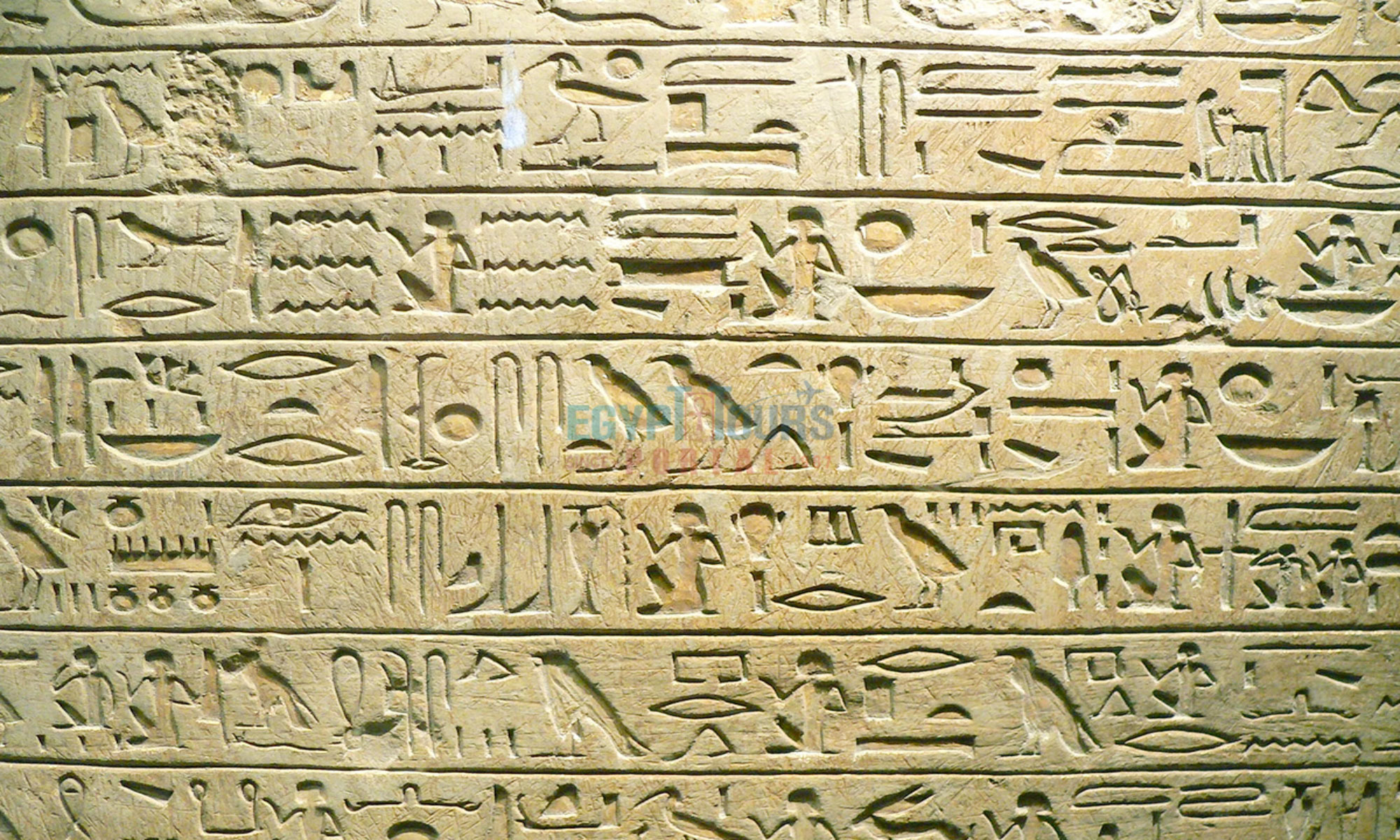
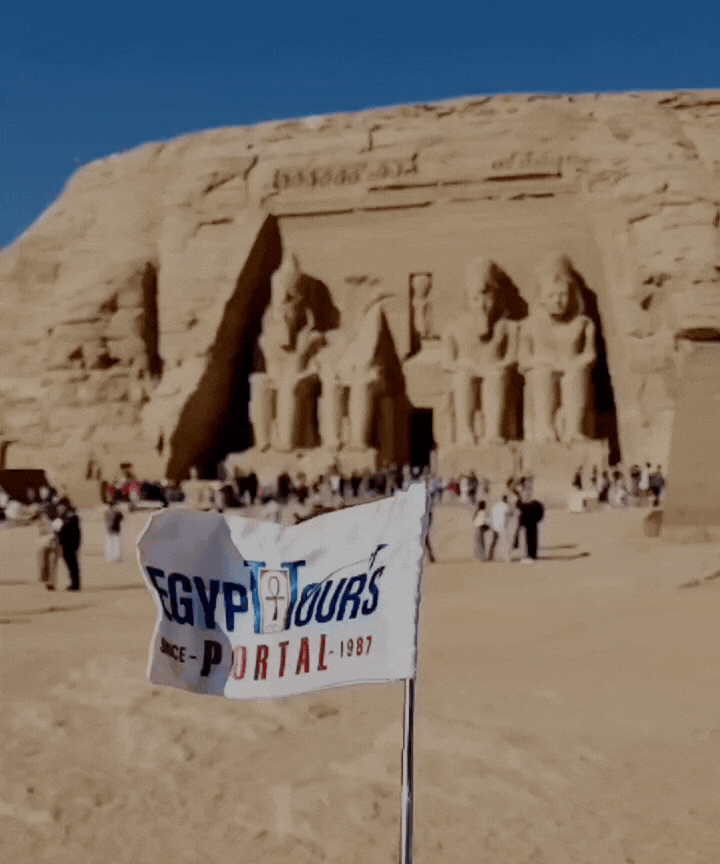
Ancient Egyptian literature is considered one of the earliest and most profound expressions of human creativity, intellect, and spirituality. From monumental inscriptions etched in stone to delicate manuscripts on papyrus, the literary works of ancient Egypt reflect a civilization deeply attuned to the cosmos, the divine, and the complexities of human existence.
Spanning over three millennia, Egyptian literature is a prime example of Ancient Egyptian Art that captures the essence of a society that sought to balance order and chaos, life and death, the earthly and the eternal. This vast corpus encompasses religious hymns, instructional texts, epic tales, and philosophical dialogues, revealing a culture that values both the practical and the transcendent.
Through the incredible work of scribes and the enduring power of their narratives, the literature of ancient Egypt provides an unparalleled glimpse into the thoughts, beliefs, and aspirations of one of the world’s greatest civilizations. Everyone will explore the evolution, genres, and impact of Egyptian literary traditions, highlighting their timeless relevance and enduring legacy.
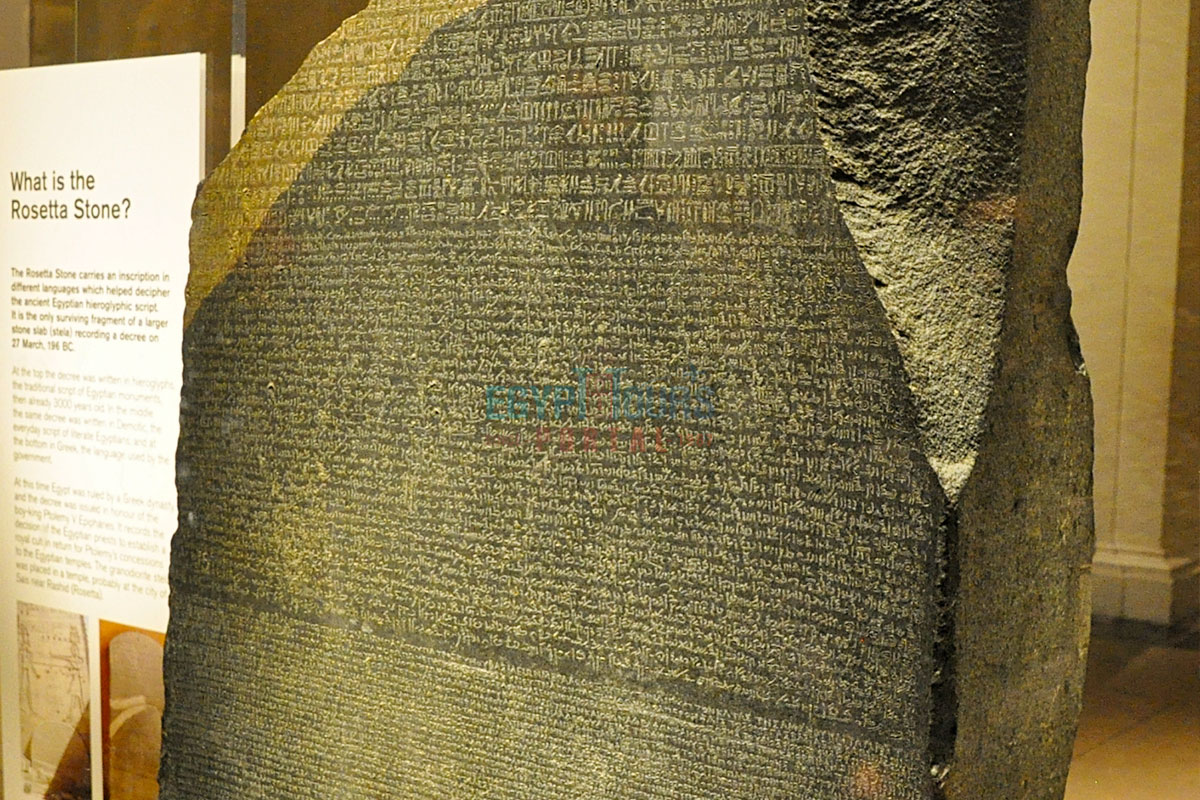
The writing systems of ancient Egypt evolved over a period spanning more than 3,000 years, adapting to the administrative, religious, and cultural needs of the civilization. This development reflects Egypt’s ingenuity in meeting the demands of governance, communication, and artistic expression.
Hieroglyphics, the earliest known form of Egyptian writing, emerged during the late Predynastic Period (c. 3100 BCE) and flourished throughout Egypt's history. This writing system, referred to by Egyptians as medu-netjer ("words of the gods"), consisted of over 700 characters, each serving as phonograms (sounds), ideograms (concepts), or logograms (entire words).
Monumental Usage: Hieroglyphics were used primarily for sacred and formal inscriptions, adorning tombs, stelae, temples, and statues. Iconic examples include the Rosetta Stone (196 BCE) and the Narmer Palette (c. 3100 BCE), which mark key moments in Egyptian history.
Aesthetic Precision: Each hieroglyphic inscription required artistic precision, with symbols arranged in vertical columns or horizontal lines to maintain visual harmony.
Hieratic script emerged during the Old Kingdom as a cursive alternative to hieroglyphics. Derived from the Greek word hieratikos ("priestly"), this script was initially used for religious purposes before becoming widely adopted for administrative tasks.
Practical Applications: Written on papyrus, ostraca, and wooden boards, hieratic was faster to write and suited to documenting legal records, medical texts, and personal correspondence.
Characteristics: Unlike intricate hieroglyphics, hieratic used flowing, connected lines that could be written with a brush or reed pen. It was read from right to left, often in horizontal lines.
Demotic script, meaning "popular writing," developed during the Late Period and became the dominant script for nearly 1,000 years (c. 700 BCE–400 CE).
Wider Accessibility: This highly cursive script replaced hieratic in most practical contexts, including legal documents, contracts, and literary works.
Cultural Significance: Demotic inscriptions appear alongside hieroglyphics and Greek text on the Rosetta Stone, providing a crucial link in the decipherment of ancient Egyptian writing by Jean-François Champollion in 1822.
With the rise of Christianity in Egypt, Coptic script emerged as the last phase of Egyptian writing. This script adapted the Greek alphabet with additional characters from Demotic to represent sounds unique to the Egyptian language.
Religious Usage: Coptic became the primary language for Christian texts, including translations of the Bible, and remained in use until Arabic supplanted it after the Islamic conquest in the 7th century CE.
Legacy: The survival of Coptic as a liturgical language helped scholars understand earlier phases of Egyptian writing.
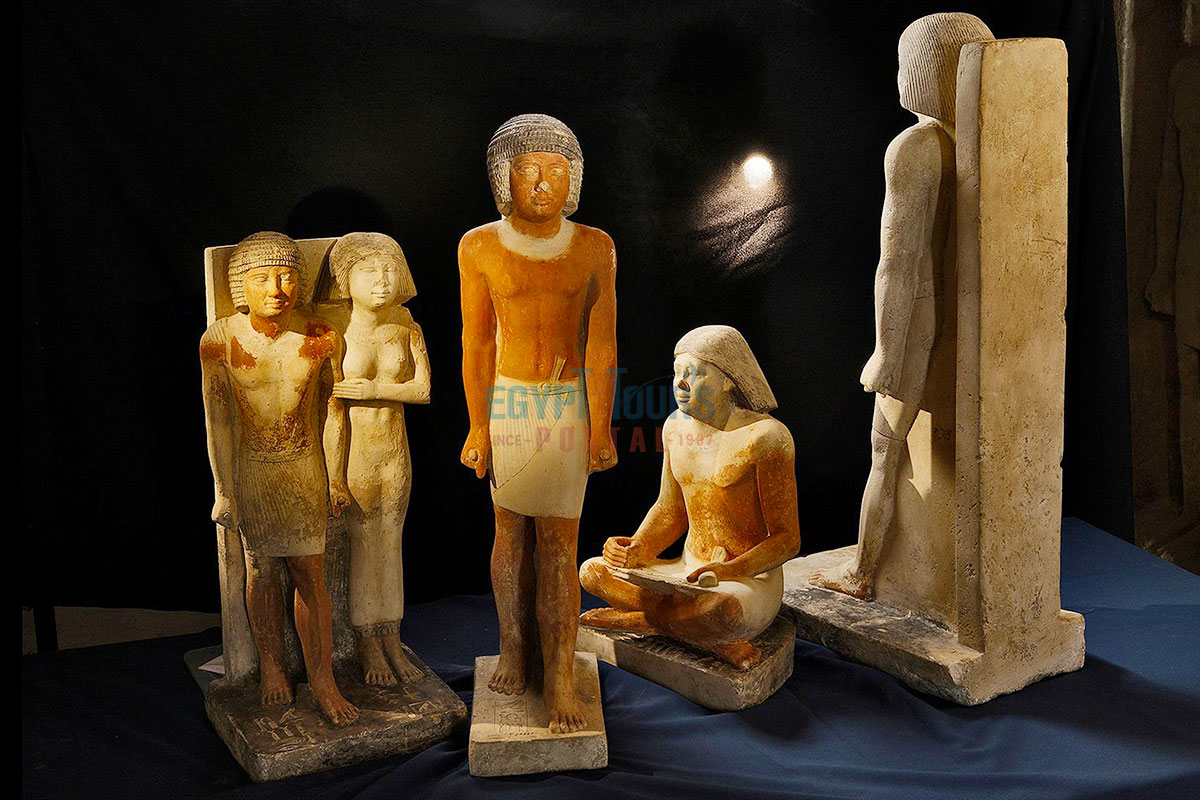
Scribes were esteemed in ancient Egypt and served as the architects of its bureaucratic, religious, and cultural systems. Their work was essential to maintaining ma’at (cosmic balance), the foundation of Egyptian governance and spirituality.
Scribes underwent rigorous training in temple schools or institutions called Houses of Life.
Curriculum: Scribes mastered hieroglyphic and hieratic scripts, learned arithmetic, and studied literature, legal texts, and religious hymns.
Practice Methods: Young scribes practiced by copying classic texts onto ostraca or wooden boards, perfecting their penmanship, and memorizing important works like the Maxims of Ptahhotep.
Scribes were indispensable to the administration, bridging the pharaoh’s authority with the populace.
Administrative Duties: Scribes recorded taxes, census data, and legal proceedings, ensuring the smooth functioning of the state.
Religious Contributions: They composed and copied sacred texts, such as the Book of the Dead and Pyramid Texts, ensuring proper rituals for the afterlife.
Cultural Preservation: By transcribing and canonizing works like The Tale of Sinuhe, scribes preserved Egypt’s literary legacy for future generations.
Works like The Satire of the Trades highlight the respect accorded to scribes, portraying their profession as superior to manual labor. A scribe’s skill in recording knowledge granted them a near-mythical status as creators of order and continuity.
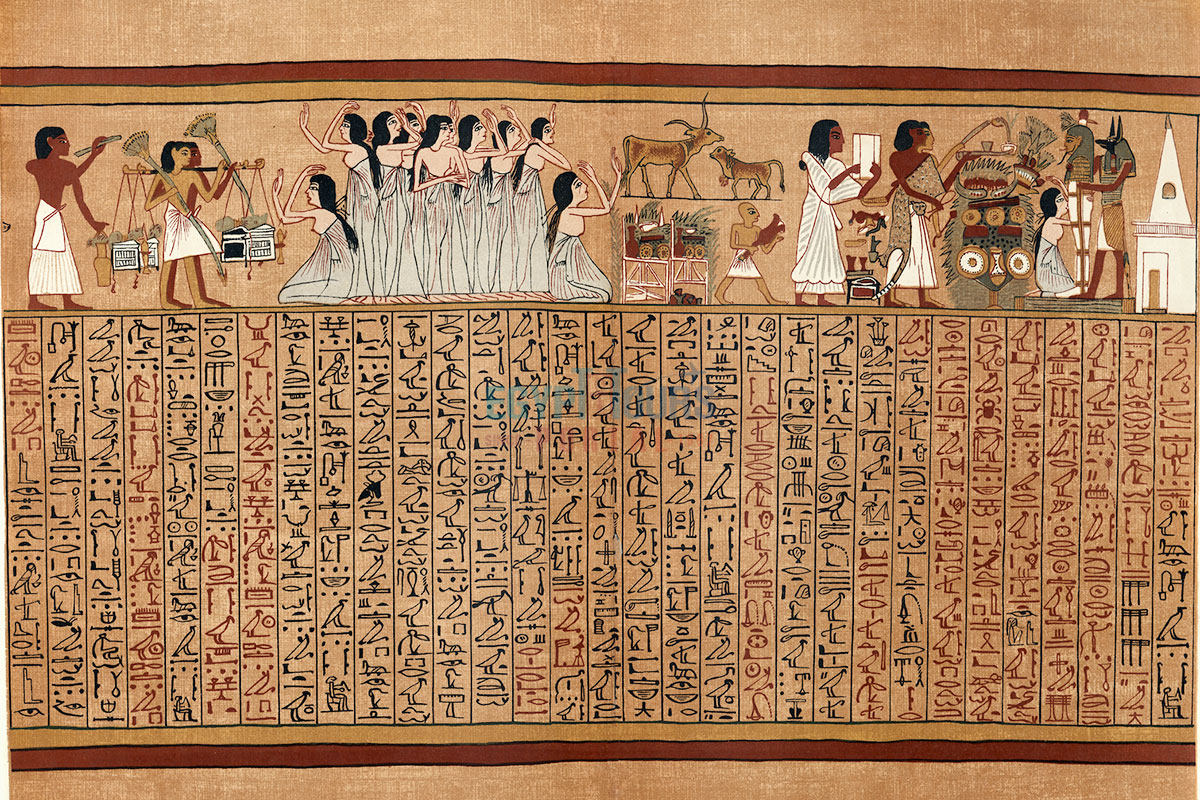
Ancient Egyptian literature spans diverse genres, from religious texts to narrative tales, reflecting the civilization’s cultural, spiritual, and moral values plus standing as a main form of entertainment in Ancient Egypt. The most well-known include the following:
Religious texts are among the earliest forms of Egyptian literature, providing guidance for the afterlife and praising deities.
The Pyramid Texts: Inscribed on tomb walls of pharaohs during the Old Kingdom (c. 2400–2100 BCE), these texts contain spells and prayers to ensure the king’s safe passage to the afterlife.
The Coffin Texts: Emerging during the First Intermediate Period, these writings democratized access to the afterlife, appearing in the tombs of nobles and commoners.
The Book of the Dead: By the New Kingdom, this collection of spells became a staple of funerary literature, guiding the deceased through challenges in the underworld.
Hymns like the Great Hymn to the Aten (Amarna Period, 14th century BCE) and invocations to Amun-Ra or Osiris combined theological reflection with poetic artistry, reinforcing religious devotion.
Explore more magnificent details about the rituals, beliefs, and customs of the religion of the ancient Egyptians.
Read MoreDidactic texts provided moral and practical guidance to readers, often framed as advice from a father to his son.
The Instruction of Ptahhotep: One of the oldest instructional texts (c. 2350 BCE), it emphasizes humility, fairness, and self-discipline.
The Instruction of Amenemhat: Written posthumously for the assassinated pharaoh Amenemhat I (12th Dynasty, c. 1991 BCE), this text warns of betrayal and promotes vigilance.
Themes: Wisdom texts often reflect Egypt’s societal values, including respect for authority, ethical behavior, and the maintenance of ma’at.
Egyptian storytelling reached its zenith during the Middle Kingdom, blending entertainment with moral instruction.
The Tale of Sinuhe (c. 1875 BCE): This narrative explores themes of exile, loyalty, and redemption, portraying Egypt as a land of ultimate refuge and stability.
The Story of the Shipwrecked Sailor: This tale, set on a magical island, celebrates resilience and contentment, emphasizing Egypt’s prosperity.
Mythological Narratives: Stories like The Contendings of Horus and Set (New Kingdom) dramatize the eternal struggle between order and chaos, reflecting Egypt’s cosmic worldview.
These works reveal the Egyptians’ appreciation for narrative complexity and their ability to weave cultural values into engaging stories.
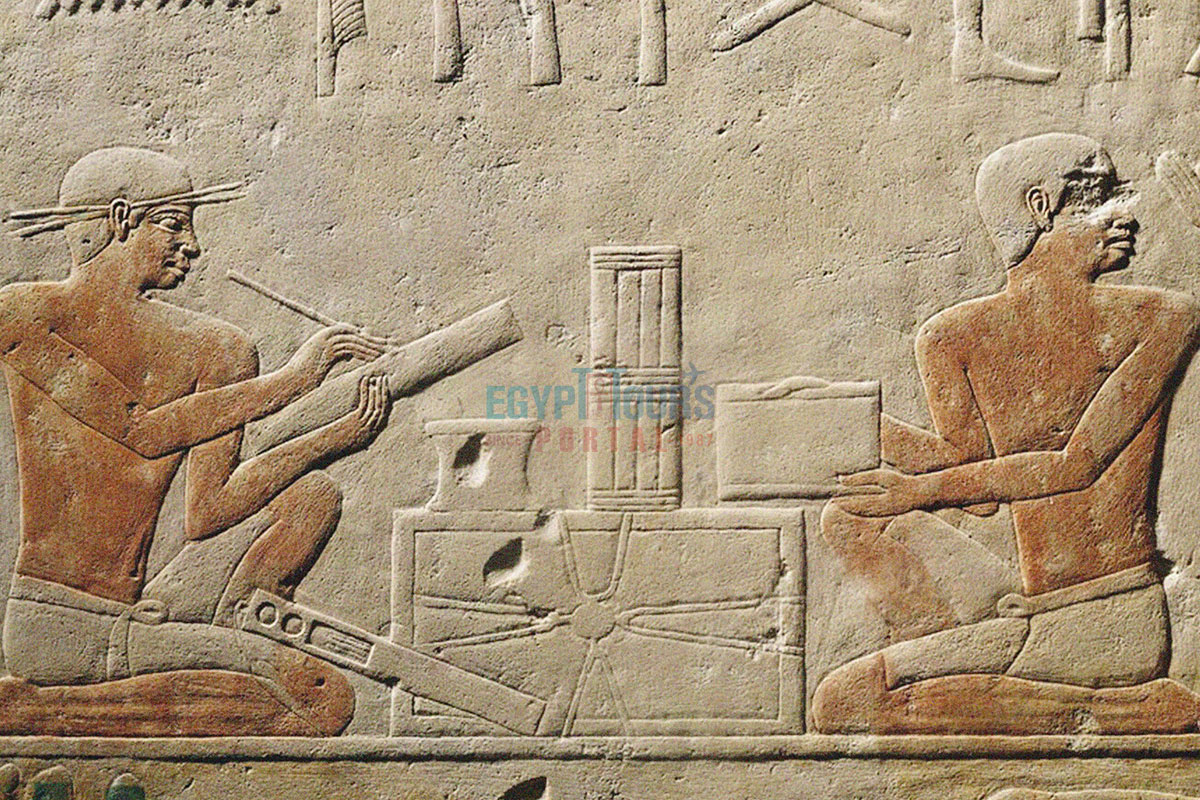
Literature as a Reflection of Social Hierarchies and it served as a mirror of the social stratification and values of its time, encapsulating the roles, expectations, and privileges of various classes.
Autobiographies as Elite Propaganda: Texts like "The Autobiography of Weni" from the 6th Dynasty detail the achievements of officials, portraying them as paragons of loyalty, virtue, and service to the pharaoh.
Weni’s account celebrates his military leadership and administrative success, emphasizing his unwavering dedication to the state and divine order (ma’at). These narratives not only glorify the individual but also reinforce the hierarchical structure where the pharaoh and his elite are central to societal harmony.
The "Satire of the Trades": Written during the Middle Kingdom, this instructional text contrasts the backbreaking labor of professions like farming, fishing, and construction with the intellectual life of scribes.
By deriding manual labor and glorifying scribal work, the text reinforces the notion that literacy and education elevated one’s social standing, marking a clear distinction between the literate elite and the laboring majority.
Depictions of Common Life: While much literature celebrates the elite, some works highlight the lives and struggles of common people. "The Eloquent Peasant", for instance, presents a poor man seeking justice, shedding light on the moral obligations of the elite and the plight of the underprivileged.
Through these texts, Egyptian literature not only reflects but actively upholds the societal order, emphasizing the roles and virtues expected of individuals within the stratified framework.
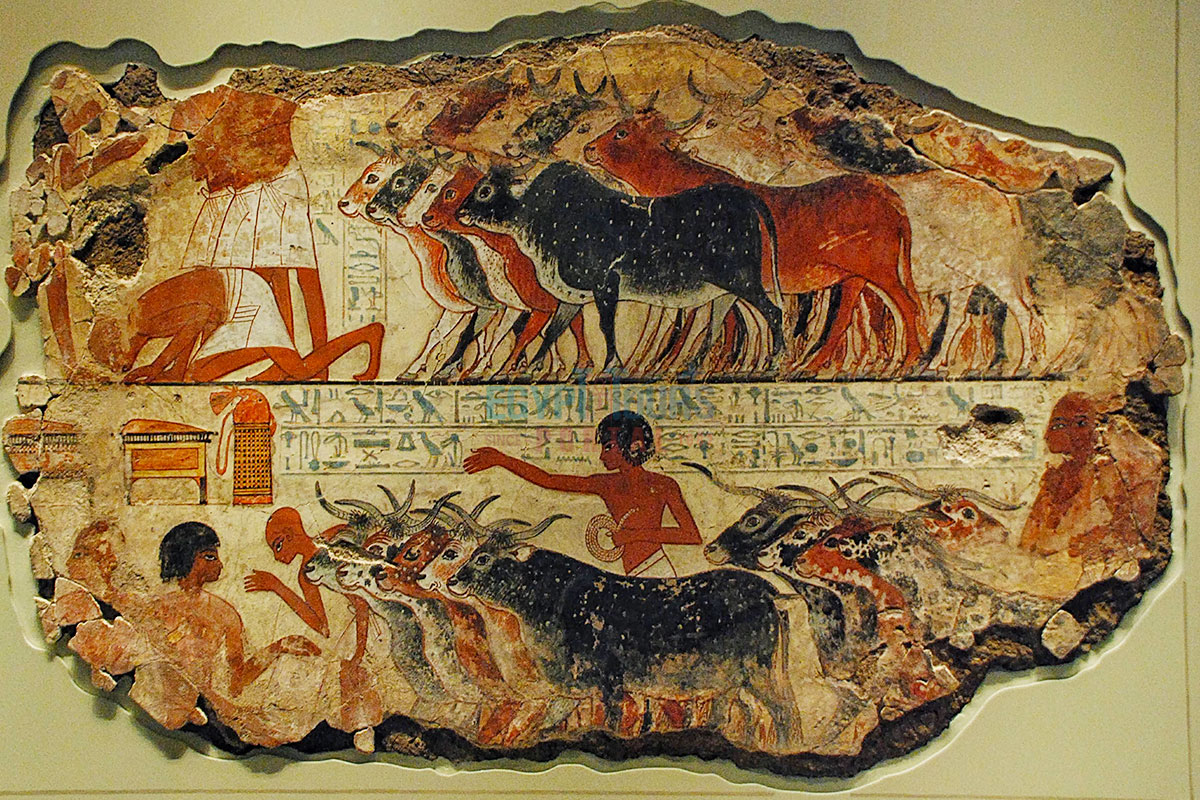
Education in ancient Egypt relied heavily on literature as a tool for instilling values, training scribes, and preserving cultural traditions.
Wisdom Texts in Scribal Training: Works like "The Maxims of Ptahhotep" (Old Kingdom, c. 2350 BCE) were central to education. These maxims advised students on moral conduct, humility, respect for authority, and effective leadership. Similarly, "The Teaching of Khety", a Middle Kingdom text, use humor and exaggeration to extol the virtues of the scribal profession, portraying it as the most desirable career path.
Repetition and Memorization: Aspiring scribes often practiced copying wisdom texts, letters, and religious hymns on ostraca or wooden tablets. This method not only honed their writing skills but also reinforced the societal values embedded in these works.
Moral Instruction through Stories: Narrative tales like "The Eloquent Peasant" and "The Tale of Sinuhe" were employed to teach justice, loyalty, and the virtues of ma’at (cosmic balance and order). These stories provided relatable scenarios that engagingly conveyed moral lessons, ensuring their retention and impact.
By integrating literature into education, the Egyptians ensured that each generation internalized the cultural, moral, and social values necessary for maintaining the state’s stability and continuity.

The mediums and techniques used by the Egyptians to record their texts highlight their dedication to preserving knowledge:
Papyrus: Made from the stalks of the Cyperus papyrus plant, this lightweight and portable medium was ideal for administrative records, literary texts, and correspondence.
Ostraca: These pottery shards or limestone flakes served as a cheaper alternative for drafts, notes, and educational exercises.
Stone and Wood: Durable and enduring, stone was used for inscriptions on monuments, stelae, and tomb walls, while wooden panels provided a reusable surface for early education.
Techniques for Longevity: To protect texts, Egyptians stored papyri in dry environments like desert tombs. Scribes frequently recopied deteriorating documents, ensuring their survival. The House of Life in temples played a critical role in this process, acting as both scriptorium and archive.
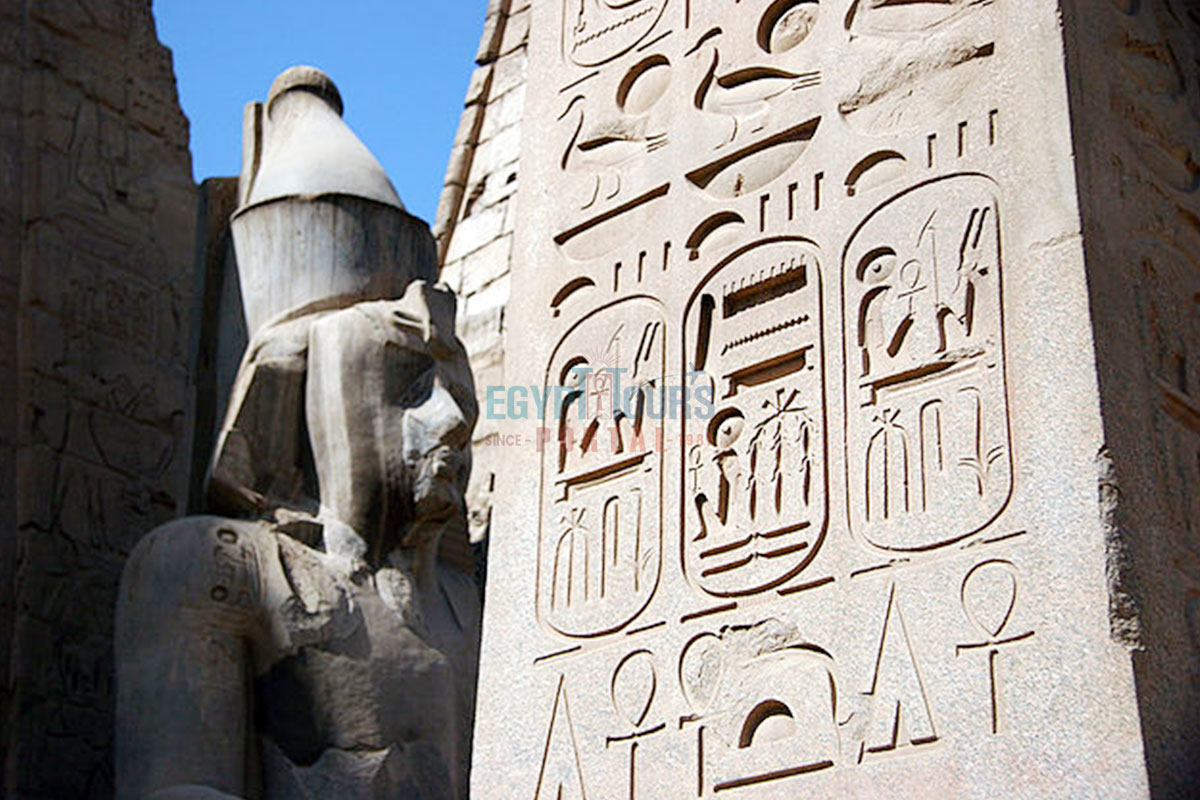
Temples were not just religious centers but also cultural hubs that safeguarded Egypt’s literary heritage.
The House of Life: Found in major temples at locations like Abydos, Edfu, and Karnak, these institutions were akin to libraries and scriptoriums. Scribes here copied sacred texts, medical manuals, hymns, and literary works.
Preservation of Knowledge: These institutions ensured the continuity of religious and literary traditions, storing copies of important works for generations. The Houses of Life also served as training centers for scribes, further cementing their role in cultural preservation.
Religious and Educational Functions: Ancient Egyptian Temples housed texts vital for rituals and education, bridging the sacred and secular realms. They acted as custodians of knowledge, contributing to both the spiritual and intellectual life of the community.
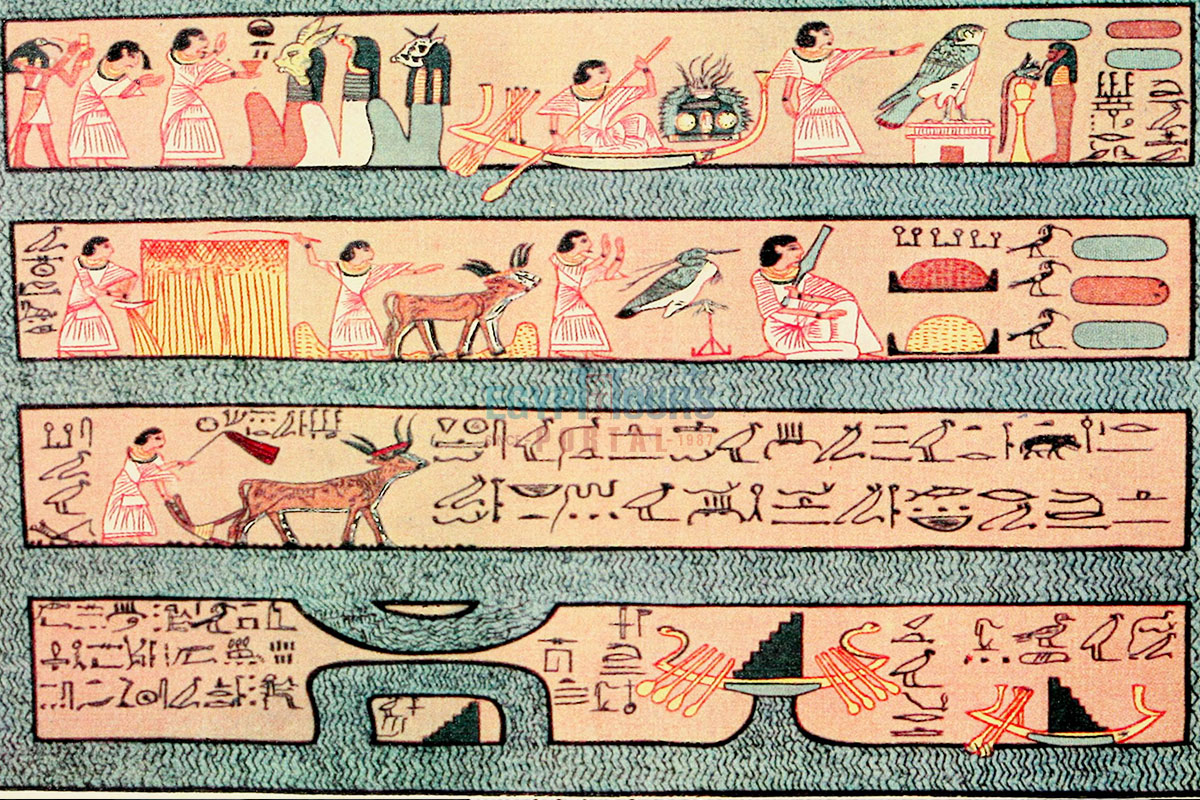
The cultural and intellectual influence of Ancient Egyptian literature extended far beyond its borders:
Greek philosophers like Plato and Pythagoras were said to have studied in Egypt, absorbing its wisdom traditions. The structure and themes of Egyptian didactic literature, such as "The Maxims of Ptahhotep", find echoes in Greek works on ethics and statecraft.
Egyptian myths and stories, such as "The Taking of Joppa", may have inspired Greek legends like the Trojan Horse. Egyptian tales of cosmic battles, moral struggles, and hero’s journeys resonate in later works, from Mesopotamian epics to modern narratives.
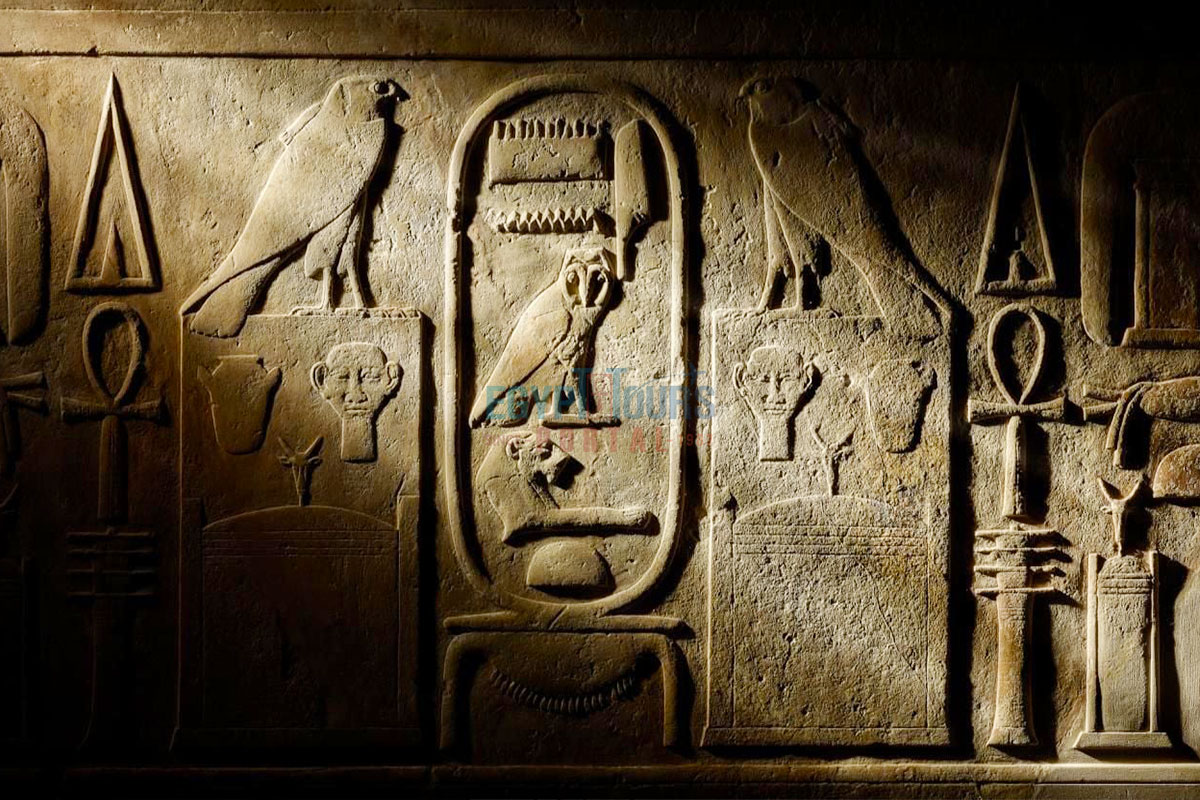
Egyptian literature continues to captivate audiences, inspiring adaptations in various media:
Literary Works: Novels like Mika Waltari’s "The Egyptian" (1945) reimagine ancient Egyptian life, blending historical accuracy with literary drama.
Film and Television: Movies such as "The Mummy" (1999) and documentaries on the Book of the Dead popularize Egyptian myths and funerary texts, presenting them to a global audience.
The Hero’s Journey: Stories like "The Tale of Sinuhe" have inspired countless iterations of the hero’s journey in literature and cinema, from Homer’s Odyssey to modern films like Star Wars.
Ancient Egyptian literature is a living example of the ingenuity, spirituality, and intellectual depth of one of history's most influential civilizations. Through their particular preservation of texts, innovative writing systems, and the enduring legacy of their narratives, the Egyptians forged a literary tradition that continues to resonate across cultures and centuries.
The moral wisdom, spiritual reflections, and imaginative storytelling in these works offer insights into the values and aspirations of a society deeply connected to cosmic balance, human experience, and the divine. The intelligence and innovation of the ancient Egyptians are shown clearly in their literary works which you can easily explore through our marvelous holidays to Egypt and Nile cruise holidays that will pave a golden path across the immortal and enriching treasures of Egypt.
Private 4 Days Cairo Tour Packages for British Travelers 4 days Cairo Egypt Tour pac...
Tour Location: Cairo – Giza...
5 Days Cairo and Alexandria Tour Package For British Travelers 5 days Cairo and Alex...
Tour Location: Cairo/Giza/Alexandria...
6 Days Cairo, Luxor & Aswan Tour Package For British Travelers 6 days Cairo, Lux...
Tour Location: Cairo/Giza/Aswan/Luxor...
Amazing 7 Days Cairo and Hurghada Holiday for British Travelers 7 Days Cairo & H...
Tour Location: Cairo – Giza – Hurgh...
Ancient Egyptian Literature Refers to the Written Works Produced in Ancient Egypt, Encompassing Religious Texts, Wisdom Literature, Narrative Stories, Hymns, Poetry, and Legal Documents.
Ancient Egyptian Literature Was Written in Hieroglyphic, Hieratic, and Later Demotic Scripts, Depending on the time and Purpose of the Text.
Some notable works include:
Common Themes Include Morality, Justice (Ma’at), Life After Death, Divine Order, Human Struggles, and the Relationship Between Humans and Gods.
Literature Was Written by Scribes, a Highly Respected Group in Egyptian Society Trained in Writing and Administration.
Texts were written on papyrus, ostraca (pottery shards), wood, leather, and carved into stone or temple walls.
Religion heavily influenced literature, with many works focusing on the afterlife, divine worship, and hymns to gods.
Texts were preserved in tombs, temples, and administrative archives. Dry desert conditions helped protect papyrus scrolls and other materials.
The Pyramid Texts are some of the oldest religious texts, intended to guide the deceased pharaohs in their journey to the afterlife.
Wisdom literature comprises instructional texts offering moral, ethical, and practical advice, such as The Instruction of Ptahhotep.
It provides insights into the beliefs, culture, daily life, and values of ancient Egyptian society and influenced later civilizations like Greece and Rome.
The Pyramid Texts, dating back to the Old Kingdom (c. 2400–2300 BCE), are considered the oldest known written literary works in Egypt.
Stories, such as The Tale of Sinuhe and The Story of the Shipwrecked Sailor, were used for entertainment, cultural transmission, and teaching moral lessons.
Yes, Egyptian literature influenced neighboring civilizations, especially through themes, myths, and religious concepts adopted by the Greeks and Romans.
Scholars use translations of hieroglyphic and hieratic texts, archaeological discoveries, and comparative analyses to interpret these works.
The entire country of Egypt deserve to be explored with its every heavenly detail but there are places that must be seen before any other such as the breathtaking Hurghada's red sea, The wonders of Cairo the pyramids of Giza, the great sphinx, the Egyptian Museum, Khan El Khalili Bazaar, the wonders of Luxor like Valley of the Kings, Karnak & Hatshepsut temple and the wonders of Aswan such as Abu Simbel temples, Philea temple, Unfinished obelisk and The Wonders of Alexandria like Qaitbat Citadel, Pompey's Pillar and Alexandria Library. Read more about the best places to visit in Egypt.
If you want to apply for a Visa On Arrival that lasts for 30 days then you should be one of the eligible countries, have a valid passport with at least 6 months remaining and pay 25$ USD in cash, as for the E-Visa for 30 day you should have a valid passport for at least 8 months, complete the online application, pay the e-visa fee then print the e-visa to later be presented to the airport border guard. You could also be one of the lucky ones who can obtain a free visa for 90 days. Read more about Egypt travel visa.
Egypt has a variety of delicious cuisines but we recommend “Ful & Ta’meya (Fava Beans and Falafel)”, Mulukhiya, “Koshary”, a traditional Egyptian pasta dish, and Kebab & Kofta, the Egyptian traditional meat dish.
The best time to travel to Egypt is during the winter from September to April as the climate becomes a little tropical accompanied by a magical atmosphere of warm weather with a winter breeze. You will be notified in the week of your trip if the Climate is unsafe and if any changes have been made.
You should pack everything you could ever need in a small bag so you could move easily between your destinations.
We have been creating the finest vacations for more than 20 years around the most majestic destinations in Egypt. Our staff consists of the best operators, guides and drivers who dedicate all of their time & effort to make you have the perfect vacation. All of our tours are customized by Travel, Financial & Time consultants to fit your every possible need during your vacation. It doesn't go without saying that your safety and comfort are our main priority and all of our resources will be directed to provide the finest atmosphere until you return home.
You will feel safe in Egypt as the current atmosphere of the country is quite peaceful after the government took powerful measures like restructuring the entire tourist police to include all the important and tourist attractions in Egypt. Read more about is it safe to travel to Egypt.
Wear whatever feels right and comfortable. It is advised to wear something light and comfortable footwear like a closed-toe shoe to sustain the terrain of Egypt. Put on sun block during your time in Egypt in the summer to protect yourself from the sun.
The best activity is by far boarding a Nile Cruise between Luxor and Aswan or Vise Versa. Witness the beauty of Egypt from a hot balloon or a plane and try all the delicious Egyptian cuisines and drinks plus shopping in old Cairo. Explore the allure and wonders of the red sea in the magical city resorts of Egypt like Hurghada and many more by diving and snorkeling in the marine life or Hurghada. Behold the mesmerizing western desert by a safari trip under the heavenly Egyptian skies.
There are a lot of public holidays in Egypt too many to count either religious or nation, the most important festivals are the holy month of Ramadan which ends with Eid Al Fitr, Christmas and new years eve. Read more about festivals & publich holidays in Egypt.
Egypt is considered to be one of the most liberal Islamic countries but it has become a little bit conservative in the last couple of decades so it is advised to avoid showing your chest, shoulders or legs below the knees.
Arabic is the official language and Most Egyptians, who live in the cities, speak or understand English or at least some English words or phrases. Fewer Egyptians can speak French, Italian, Spanish, and German. Professional tour guides, who work in the tourism sector, are equipped to handle visitors who cannot speak Arabic and they will speak enough English and other languages to fulfill the needs of all our clients.
The fastest way is a car, of course, a taxi. If you are in Cairo ride a white taxi to move faster or you could board the fastest way of transportation in Egypt metro if the roads are in rush hour.
The temperature in Egypt ranges from 37c to 14 c. Summer in Egypt is somehow hot but sometimes it becomes cold at night and winter is cool and mild. The average of low temperatures vary from 9.5 °C in the wintertime to 23 °C in the summertime and the average high temperatures vary from 17 °C in the wintertime to 32 °C in the summertime. The temperature is moderate all along the coasts.
It is the home of everything a traveler might be looking for from amazing historical sites dating to more than 4000 years to enchanting city resorts & beaches. You will live the vacation you deserve as Egypt has everything you could possibly imagine.









